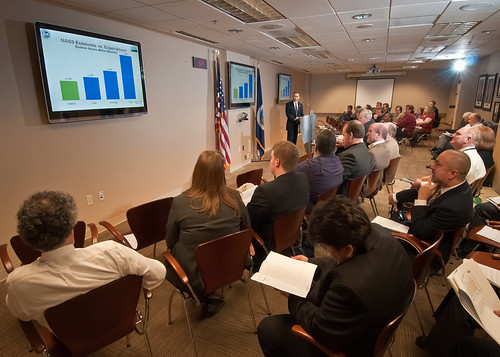
Starting next week, the National Agricultural Statistics Service (NASS) will reach out to tens of thousands of farmers across the United States. Our interviewers will go door to door and make phone calls to collect the most accurate information possible about farmland in each state. In addition, we’ll ask farmers to report their acres planted by crop, and total grains & oilseeds stored on their farms. We will then spend several weeks processing and analyzing the responses we receive so that we can publish some of the most anticipated reports by the end of the month. Let’s just say we keep things busy in June!
Personally, I’ve gone through all aspects of NASS surveys. Growing up on our family farm in Kansas, I saw my father fill out surveys he received from USDA’s statistical agency. Later I joined NASS myself and got a chance to work with and survey farmers in Kansas, Indiana, and North Dakota. Over time, my career brought me to NASS’ Washington, D.C. office where I lead teams of statisticians who analyze survey data and other information to publish official U.S. crop estimates.
With this background, I understand how important accurate information is to many people in agriculture. And the best way to have good information is to get it directly from the source – farmers and ranchers. I saw my family make marketing decisions after looking at crop production numbers and reviewing local reports. Of course it wasn’t just my family. I have heard from many producers how data help them make decisions on their farms. In fact, statistics have become a crucial tool in today’s agriculture.
These days I don’t interact with individual farmers as much as I used to but I still see the impact of our reports, as I now get to talk to many ag industry groups whose representatives always point out their need for NASS data. These groups rely on the numbers to demonstrate the need for policy changes and make sure that USDA and other decision-makers have an accurate picture of agriculture in every state.
This year, I’ve been holding a monthly #StatChat on Twitter (@usda_nass) as a newer way to answer questions following our key crop releases. It’s a great way for me to reconnect with farmers across the country, answer their questions, and witness firsthand that the interest in agricultural data remains ever-strong among today’s farmers.
I hope everyone contacts NASS for surveys to understand the impact their response can have on their industry both locally and nationally and takes the time to respond. I also encourage everyone to join me for our next #StatChat on June 30 at 1 p.m. I’ll be online answering your questions about the highly-anticipated Acreage and Grain Stocks reports.
